Architect Aurelien Chen has reworked a former miners’ canteen in Handan, China, right into a multipurpose cultural centre that includes interventions that reply to the constructing’s communist heritage.
The canteen was constructed within the Nineteen Seventies to serve employees on the Jinxing coal mine in China’s Hebei Province.
It’s surrounded by workplace buildings courting again to 1912 that have been constructed by German architects and have a distinctly Western aesthetic.
The native authorities engaged China State Development Engineering Company (CSCEC) to supervise the sustainable renovation of the location, with Beijing-based Chen requested to move up the design crew.
The positioning is designated as a vacationer vacation spot with a concentrate on representing China’s evolution in the course of the “Crimson Period”, starting with the founding of the Chinese language Communist Social gathering (CCP) in 1921 and culminating within the Cultural Revolution that came about from 1966-1976.
Following a historic survey of the location, it was decided that the early Twentieth-century buildings needs to be restored to their unique situation.
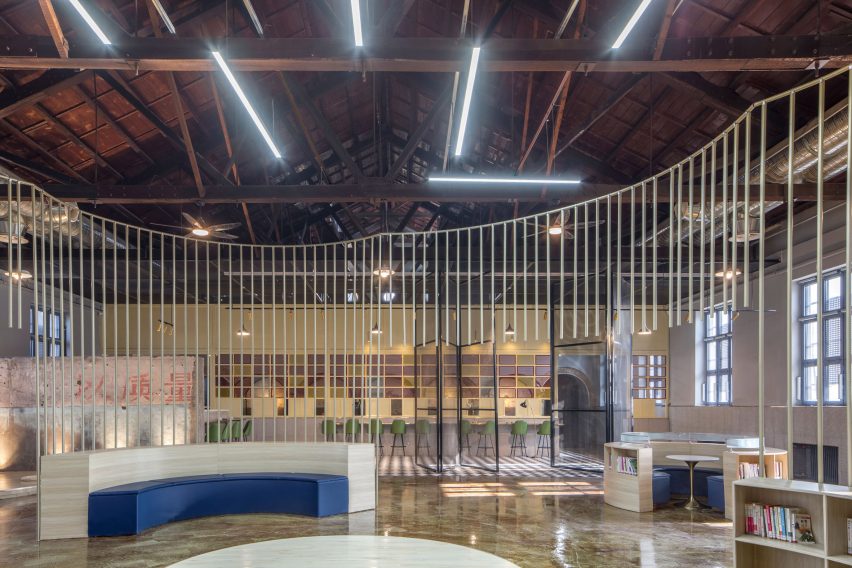
Chen informed Dezeen that he felt the canteen constructing also needs to be preserved because it enhances the masterplan and magnificence of the sooner constructions.
He defined that the transient for the refurbishment was to stress and recreate architectural parts that had been misplaced over time or have been in want of great restoration.
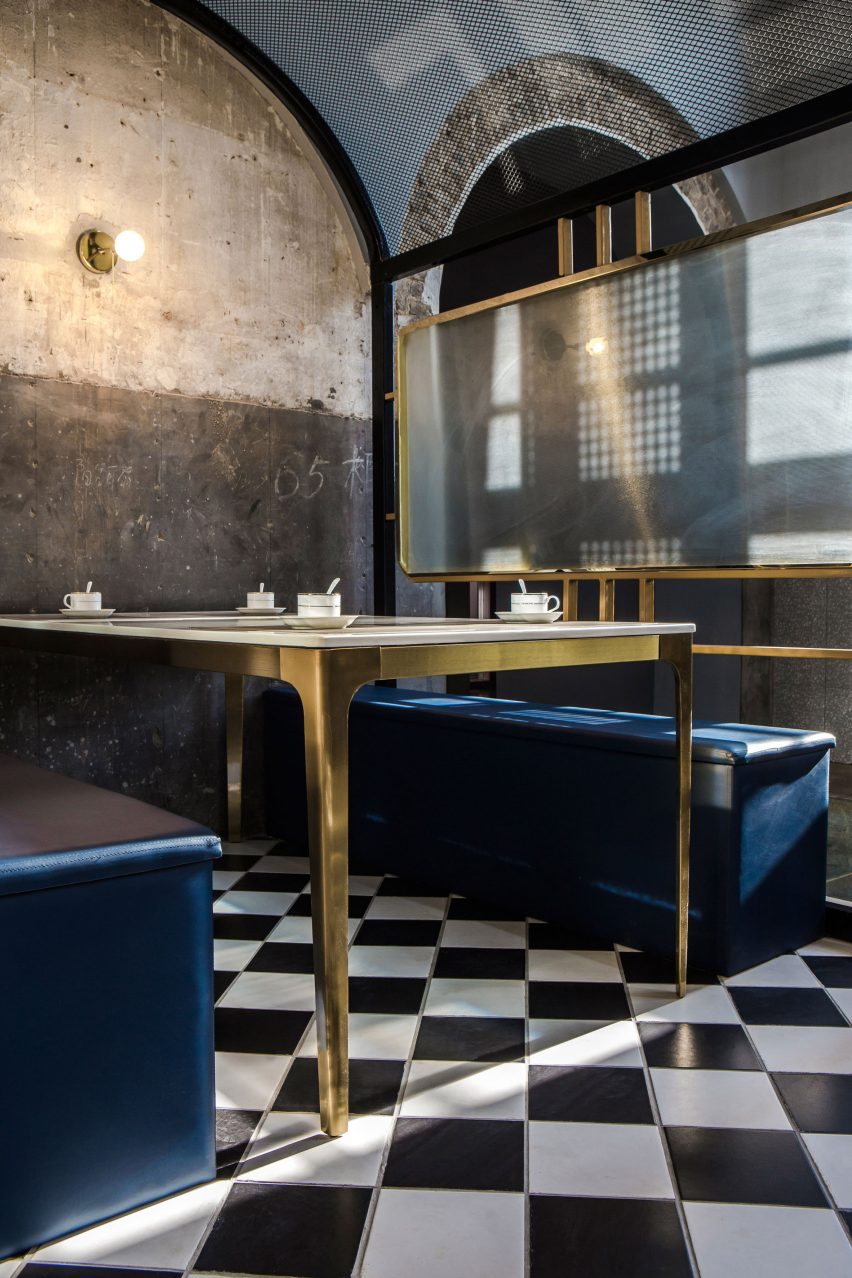
“As an alternative of recreating a pretend Crimson Period ambiance, I most popular to maintain the few historic traces that already existed inside the constructing,” stated Chen.
“I developed the design and the area round them, making an attempt to subtly evoke the colors, supplies and furnishings of that point.”
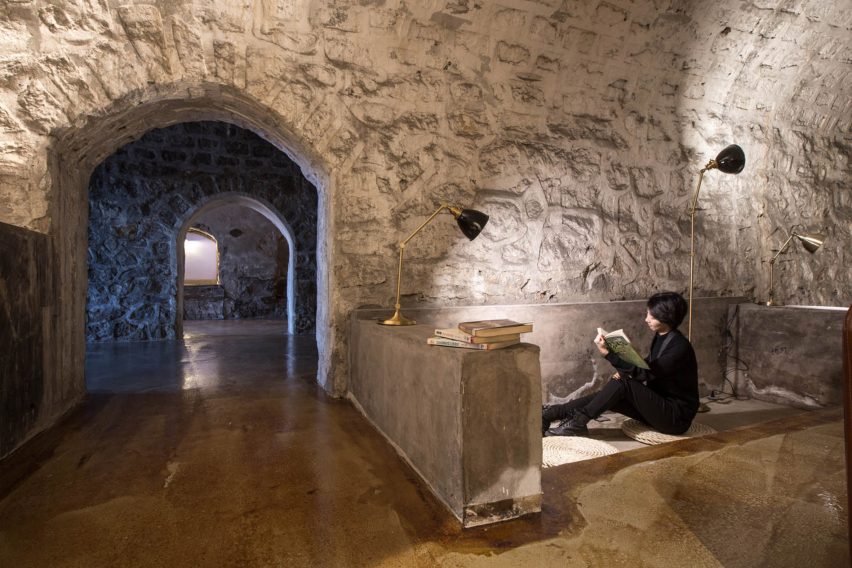
Probably the most vital interventions is a flower-shaped, multipurpose furnishings component positioned on the centre of the primary corridor.
The define of this area, which can be utilized as an data desk, exhibition area, stage or leisure space, evokes a typical Crimson Period sample that was painted on the unique ceiling.
Different furnishings within the versatile central corridor contains wave-shaped benches and round studying cubicles which are meant to offer a way of fluidity and suppleness of use.
The round studying areas are impressed by the corridor’s unique ceiling lights and incorporate built-in bookshelves to minimise their visible affect on the area.
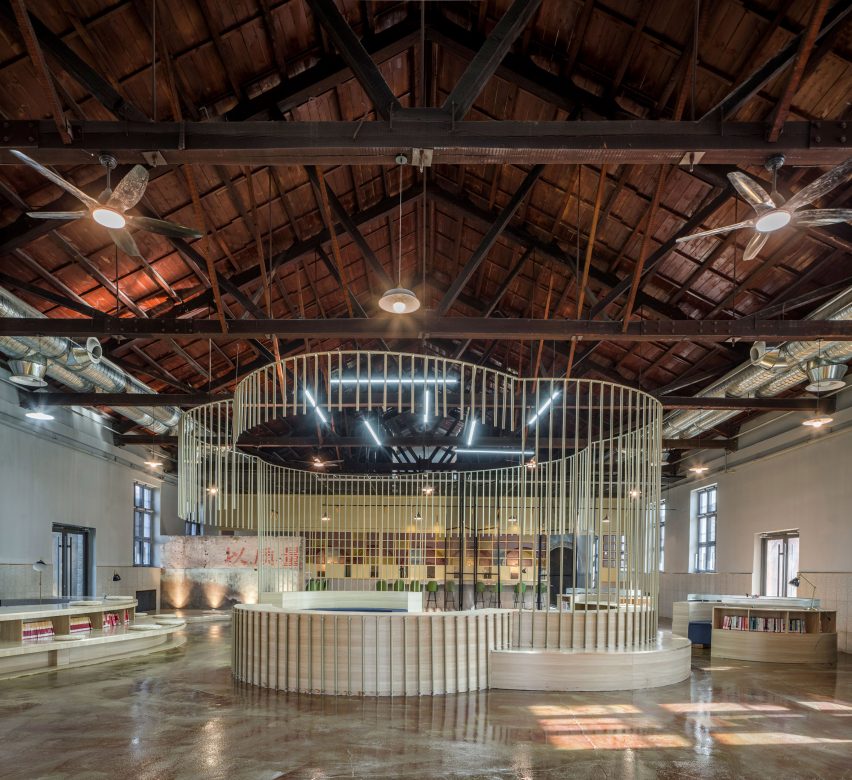
Present dilapidated inner partitions have been retained and have become key options inside the renovated areas. A linear partition wall that was as soon as the canteen’s serving counter was reworked right into a studying desk with lamps and excessive stools.
The bar space is positioned in a nook of the area and flanked by a concrete wall displaying Communist slogans painted in Chinese language characters.
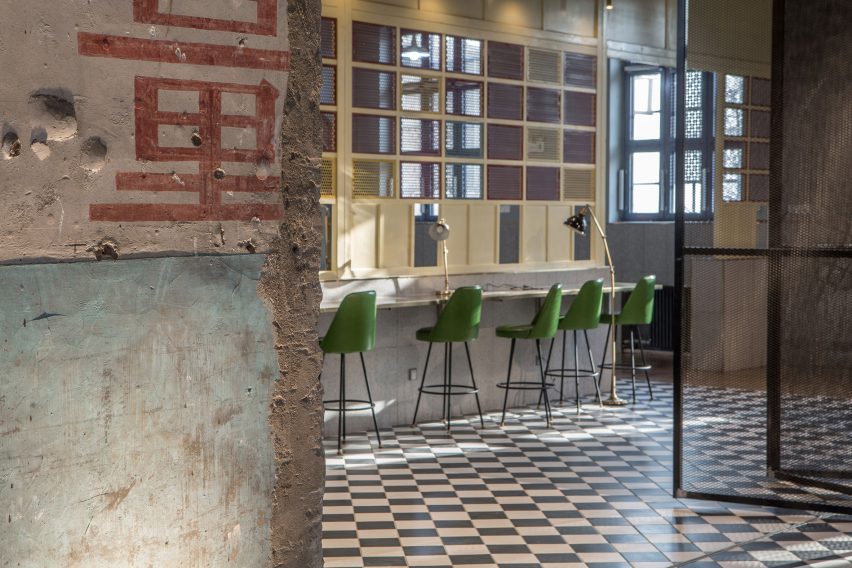
Chen needed to include arches into the design to echo particulars discovered on a neighbouring historic constructing. This was achieved by including a row of cubicles with arched canopies to the restaurant space.
The cubicles additionally reference arched brick openings uncovered in the course of the renovation course of, in addition to stone vaults found within the basement.
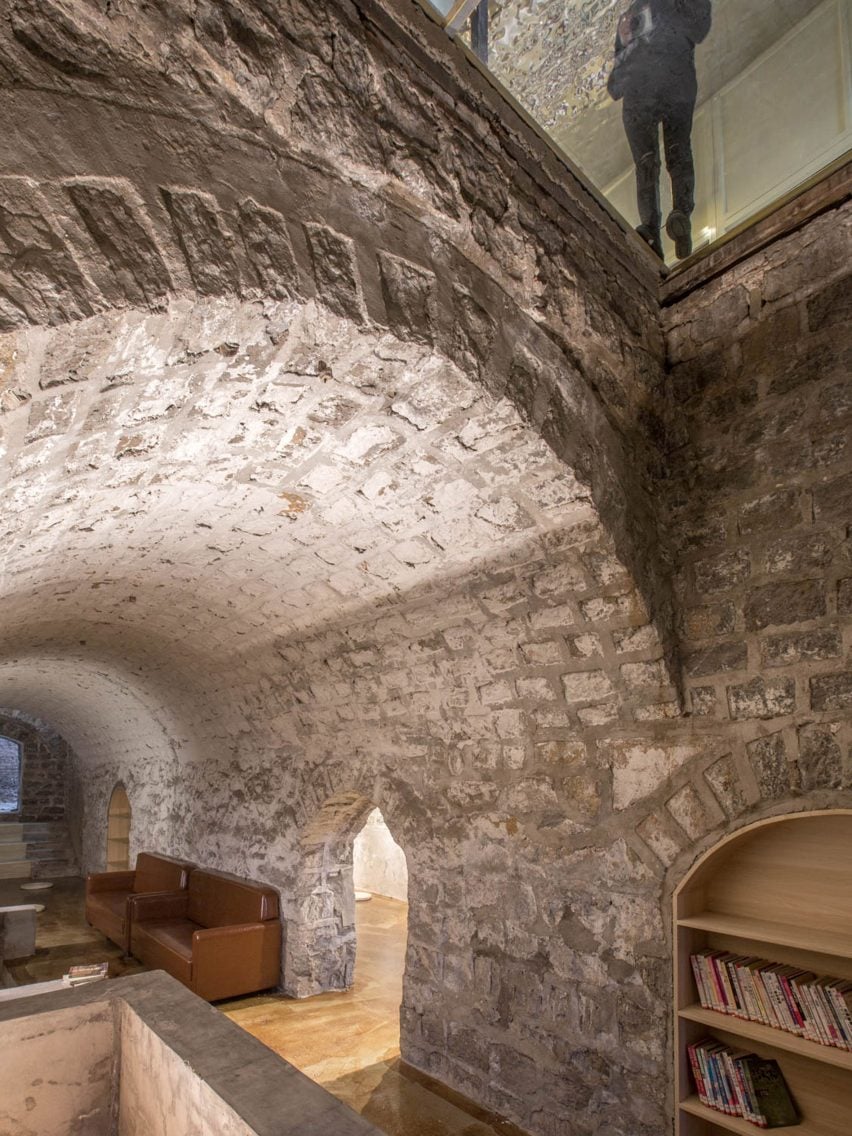
The vaults have been preserved of their unique state, with minimal interventions serving to to rework them into studying corners and exhibition areas. A glass flooring maintains a visible connection between these areas and the general public areas above.
Stairs resulting in the basement have been moved into an arch-shaped, metal-clad quantity added to the facade. The exterior window openings have been reshaped into arches that reference particulars discovered on the historic buildings close by.
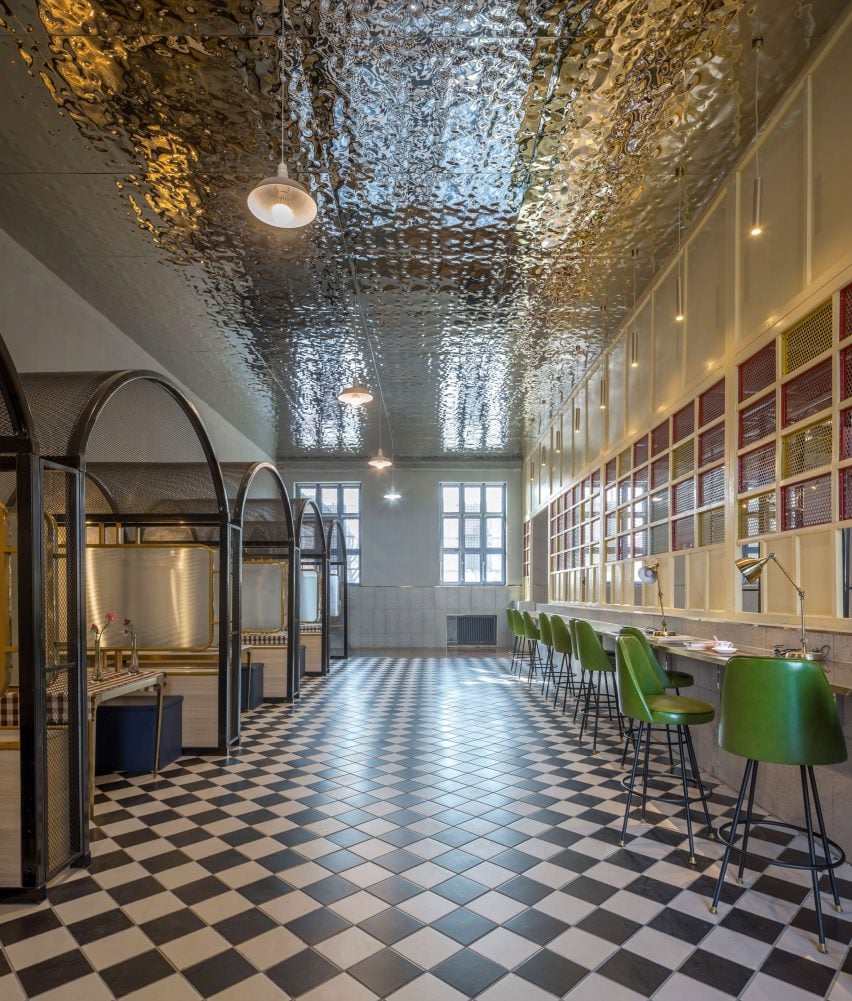
Chen defined that, though the variety of vital heritage particulars inside the constructing have been restricted, every one was rigorously restored and used as the idea for additions that improve the hyperlink to the previous.
“I’d say that new interventions are inclined to mix with the present circumstances, typically in a really immaterial approach,” the architect added. “Their form and area derive straight from unique parts, revealing them; the supplies, nevertheless, are extra in distinction.”
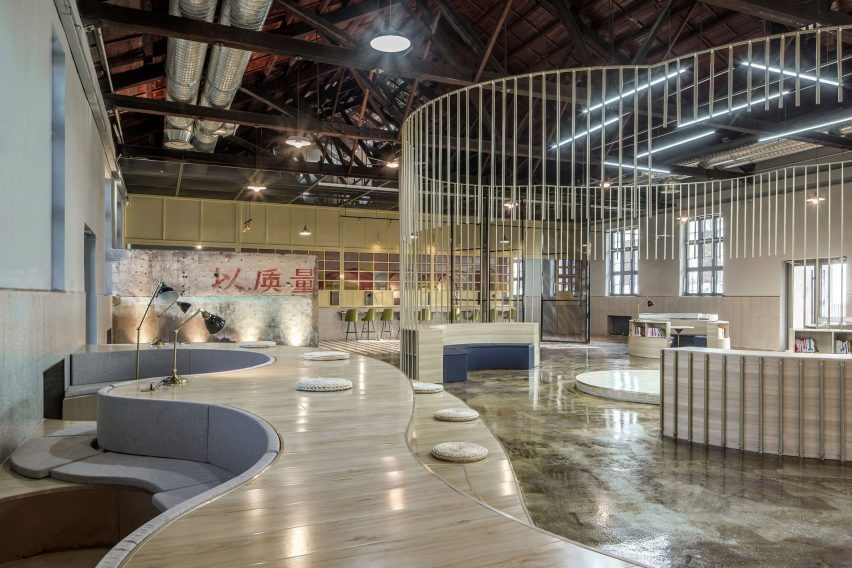
Different current cultural and leisure tasks in China embrace a customer centre with spiralling tiled roofs and the nation’s greatest library, which was designed by Danish studio Schmidt Hammer Lassen Architects.

